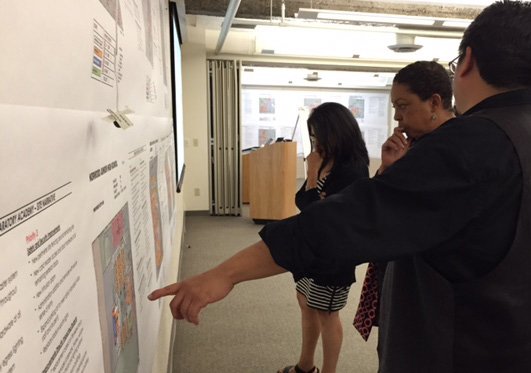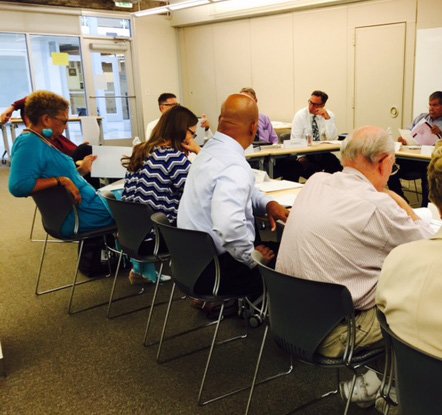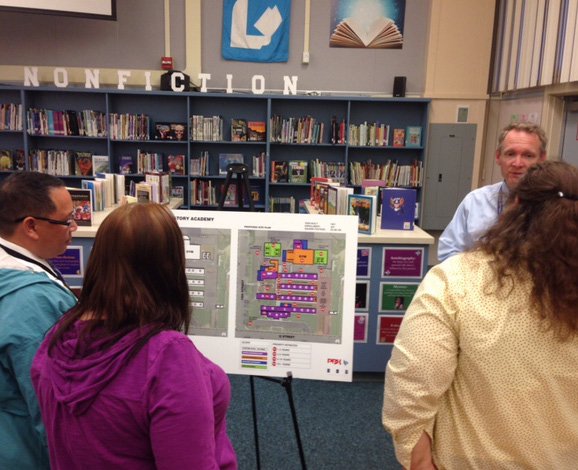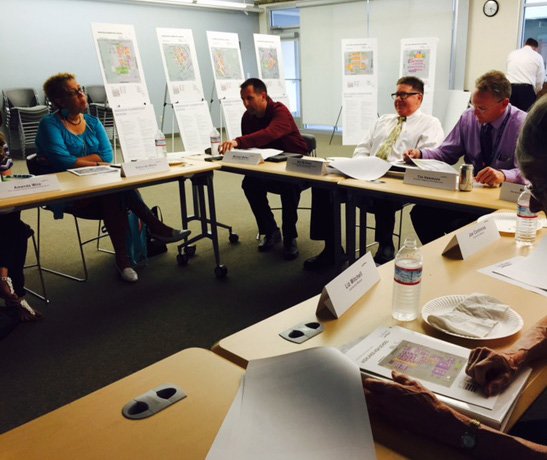A Long-Range Facilities Master Plan is often as much about the process as the product.
Master planning is a participatory process. Community engagement ensures that stakeholder voices are incorporated into the final plan. In the development of the 2015 master plan the assessment team held multiple meetings with District representatives, the Twin Rivers Unified Steering Committee, and facilitated community town hall events to present and discuss LRFMP recommendations. Multiple line-by-line review meetings were held with District representatives to discuss and analyze the work items identified at each facility. The proposed scopes of work were further defined, classified, and prioritized, and cost estimates were then established for each. Once fully vetted, the proposed plan was presented to the Twin Rivers Unified Board of Trustees for consideration, approval, and implementation.
TRUSD District Core Team
Throughout the process, PBK-WLC met with the District’s Core Instructional, Facility, and Maintenance Team. The input was invaluable to the process. This group fulfilled a unique role. The Core Team brought a District-wide perspective to the development of the LRFMP. The TRUSD Core Team’s charge was to make sure that comprehensive instructional, facility, and maintenance standards were adhered to in the discussions with each of the school sites.
School Site Input
An important key to any LRFMP is obtaining input from each individual school site. This process was central to the development of the TRUSD LRFMP as well. The master planning team met numerous times with each school site. The school sites were asked to consider the existing conditions as well as educational adequacy of their facility.
Master Planner
Twin Rivers selected PBK-WLC Architects as the Master Planning consultant. In that role, PBK-WLC was tasked with organizing the process and identifying projects and related budgets. The process was a collaborative one. TRUSD and PBK-WLC met repeatedly throughout the development of the LRFMP. Ideas were exchanged. Site feedback was discussed and shared. Cost estimation standards were developed. Priorities were identified.








